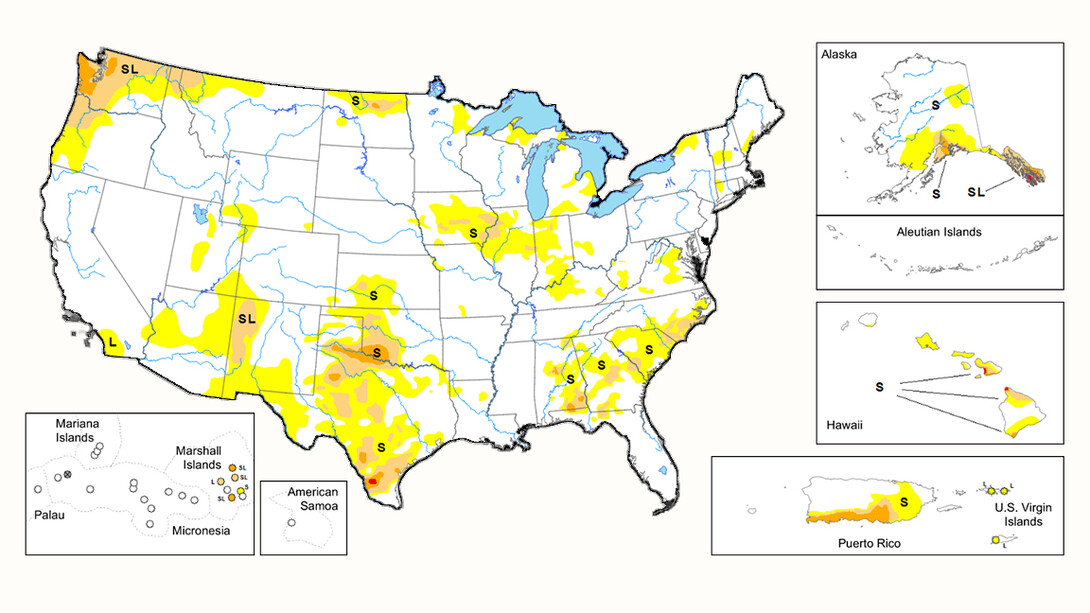
The U.S. Drought Monitor now provides assessment of drought for the U.S. Virgin Islands. With the addition, the drought monitor provides weekly assessments for the entire collection of U.S. states and territories.
Located in the Caribbean, east of Puerto Rico, the U.S. Virgin Islands are comprised of four large islands — St. Croix, St. Thomas, St. John and Water Island — and about 50 smaller islets and cays. They cover approximately 133 square miles. Drought will be monitored separately on St. Thomas, St. John and St. Croix.
Brad Rippey, a drought monitor author and United States Department of Agriculture meteorologist, recently spoke to the St. John Source about the importance of drought monitoring, saying that drought can develop quickly on islands with few fresh water resources.
“It is costlier to deliver fresh water to island locations, as compared to mainland sites,” Rippey told the newspaper. “Drought can also lead to an increase in brushfires and agricultural impacts, such as withered crops and a reduced availability of grass and other forage for animals. Even tourism can suffer during periods of heightened drought concerns.”
Positive Nelson, agriculture commissioner for the Virgin Islands, told the newspaper that much of the island nation and Puerto Rico experienced historic drought in the mid-2010s, and parts of the islands have been experiencing drought conditions in 2019. While there have been lower than normal precipitation levels measured in St. Croix, St. John and St. Thomas during parts of this spring, showers and thunderstorms have recently brought heavy rain to the area, according to the June 6 drought monitor summary.
With inclusion on the drought monitor, the Virgin Islands will be eligible for the U.S. Department of Agriculture Livestock Forage Disaster Program, which provides aid to farmers who have experienced grazing losses due to qualifying drought conditions during normal grazing periods.
The process to add the Virgin Islands to the drought monitor began in 2016 when USDA and National Drought Mitigation Center staff traveled to the University of the Virgin Islands on St. Croix and held a multi-agency forum. Hurricanes in 2017 delayed the implementation of drought monitoring in the region, Rippey said.
Earlier this year, the drought monitor added drought assessment of the U.S.-affiliated Pacific Islands.
The National Drought Mitigation Center and U.S. Drought Monitor are housed at the University of Nebraska–Lincoln.







